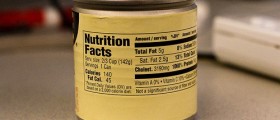
Cholesterol and the main types
Cholesterol is a substance that is naturally produced in our body and that plays a very important role in a number of functions, including cell maintenance and production of hormone. The liver is an organ that has the ability to regulate blood levels of cholesterol, but it can also secrete it if the body needs it. This organ absorbs and stores the cholesterol from the intestine after each meal. However, even though cholesterol is important for a number of functions and processes in our body, when its levels are increased, it is a serious sign that the person is at risk of getting some serious disease.
There are several types of cholesterol, but those that are important are so-called good and bad cholesterol, or more precisely HDL – high-density lipoprotein and LDL – low-density lipoprotein. The good cholesterol helps in prevention of atherosclerosis since it removes cholesterol from artery walls and disposes it through the liver. On the other side, bad cholesterol is responsible for building up the cholesterol on the walls of the arteries and the formation of cholesterol plaque. This building up leads to atherosclerosis.
Normal levels of LDL and HDL
The levels of LDL and HDL that are considered to be normal are not the same for men and women. In men, levels of HDL ranging from 40 to 50 mg/dL are regarded as normal, while men whose results show 40 mg/dL are at risk of developing some heart disease. In women, the normal range is between 50 and 60 mg/dL, so those that are below 50 mg/dL are considered to be dangerous.
As for LDL levels, the value is considered an optimal as long as it does not exceed 100 mg/dL, and near optimal as long as it is not higher than 129 mg/dL. The borderline level is considered to be in the range between 130 and 159 mg/dL, while anything that exceeds 160 and 189 mg/dL is high.
Besides these levels, the levels of triglycerides should also be measured on regular basis, since they are a form of the blood fat as well. They are not directly associated with the liability of developing some heart diseases, but their results are related to total cholesterol and HDL and LDL levels. Any value below 150 mg/dL is regarded as normal, while values between 200 and 499mg/dL are considered to be high.

















Your thoughts on this
Loading...